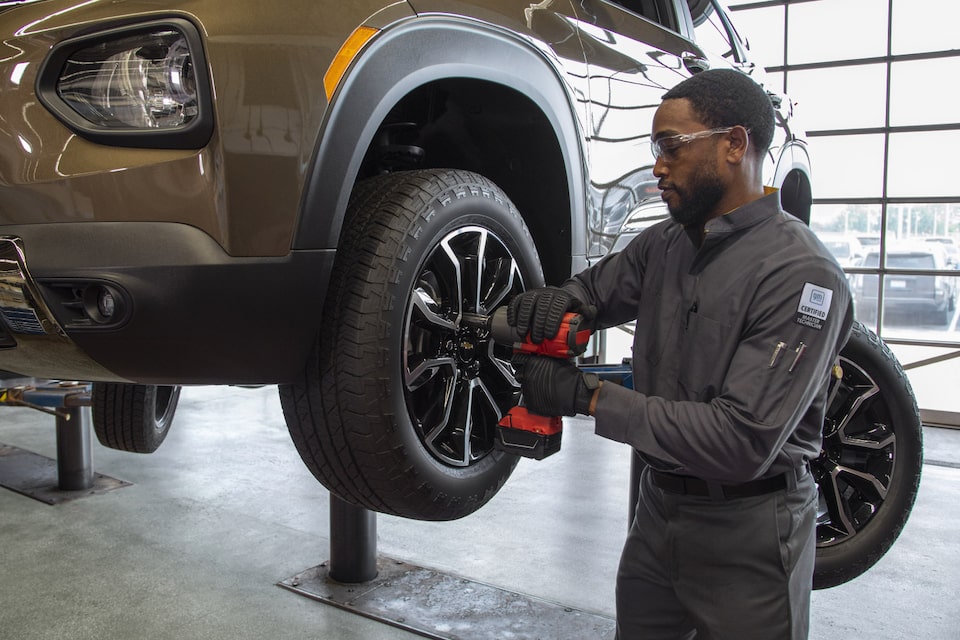Trustworthy Tire Shop Morris: Your Destination for High Quality Tires and Solutions
Trustworthy Tire Shop Morris: Your Destination for High Quality Tires and Solutions
Blog Article
Tire Solution: The Influence of Weather
When it comes to ensuring ideal efficiency and safety on the roadway, recognizing the impact of weather conditions on tire service is crucial. In this conversation, we will discover the detailed partnership in between climate problems and tire solution, losing light on the relevance of weather-specific tire upkeep methods and considerations.
Heat and Tire Efficiency
When exposed to heats, tires experience changes in performance that can substantially influence automobile safety and handling. The heat created from long term driving or heat conditions triggers the tire rubber to soften, causing reduced tread life and enhanced wear. As the rubber ends up being softer, the tire's grip on the road reduces, influencing braking distances and overall traction. In severe cases, too much warmth can even create tire blowouts, presenting an extreme security threat to the lorry and its residents.
Additionally, heats can increase the procedure of tire aging, causing the rubber to weaken faster. This can cause splits, protrudes, and other types of damage that jeopardize the structural honesty of the tire. To alleviate the effects of warm on tire performance, motorists ought to regularly check their tire pressure, turn tires to guarantee also put on, and evaluate for any type of signs of damage. Additionally, making use of tires specifically developed to withstand heats can aid keep ideal efficiency and safety and security when traveling.
Cold Climate Impacts
Cold weather condition conditions can have a substantial effect on tire performance and security. In cool climate, tires may also shed air pressure extra quickly, which can influence managing and gas effectiveness.
To mitigate the impacts of winter on tires, it is vital to routinely check tire stress and inflate them to the producer's advised levels. Making use of winter months or all-season tires created for winter conditions can also enhance traction and hold on icy or snowy roadways - tires morris il. Appropriate tire upkeep, consisting of routine evaluations for wear and damage, becomes much more vital during colder months to make sure ideal efficiency and safety
Rainy Issues Effect
Throughout stormy conditions, tire efficiency and safety and security can be significantly influenced by the wet roadway surfaces and minimized visibility. The tread pattern of tires plays an essential function in keeping traction on wet roadways. Tires with damaged footsteps are a lot more prone to hydroplaning, where a layer of water accumulates between the road and the tire surface, causing loss of grip. To combat this, motorists must frequently examine their tires for appropriate walk deepness and consider purchasing tires specifically created for wet conditions.

Snow and Tire Safety
When driving in snowy conditions, having the right tires can make a substantial difference in safety and efficiency. Winter tires are made with special rubber compounds and walk patterns to supply much better traction on snow and ice compared to all-season tires.
Along with using winter months tires, it is crucial to ensure they are effectively pumped up. Winter can browse around this web-site cause tire stress to drop, influencing grip and handling (tires morris il). Consistently inspecting and keeping the proper tire pressure is important for ideal efficiency in snowy conditions

Weather-Related Tire Upkeep
Weather-related tire maintenance encompasses a variety of techniques intended at making sure optimum tire function and long life in different climate circumstances. One key facet of weather-related tire maintenance is tire pressure guideline. Inspecting tire step regularly and changing tires when step wear gets to a certain deepness is crucial for preserving traction and stability in adverse climate.
Conclusion
In conclusion, weather have a substantial effect on tire performance and safety and security. From warm influencing tire stress and wear to cool climate minimizing grip, it is vital to take into consideration the climate when keeping additional reading and making use of tires. Stormy problems can decrease hold and result in hydroplaning, while snow can enhance the risk of crashes if tires are not appropriately geared up. Weather-related tire maintenance is important in making sure optimal performance and safety and security on the roads.
In this discussion, we will discover the elaborate relationship in between weather condition conditions and tire service, shedding light on the significance of weather-specific tire maintenance practices and considerations.

Report this page